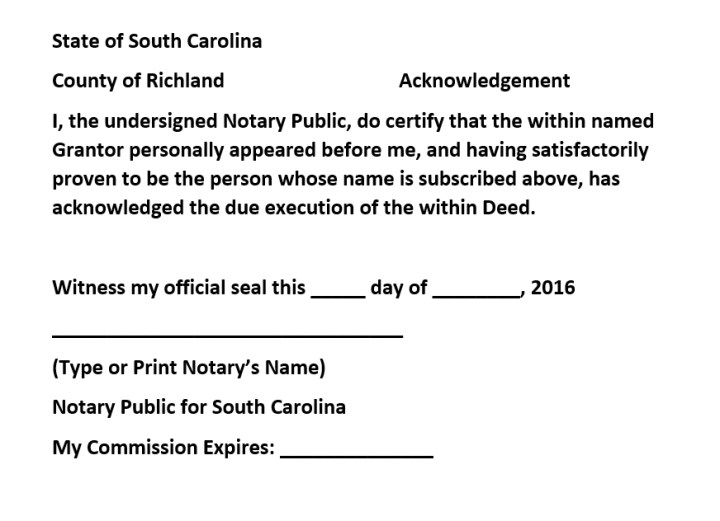We have a hot-off-the-presses South Carolina Ethics Advisory Opinion (16-04, July 18, 2016) in which a lawyer asks when opposing counsel must be reported to the Office of Disciplinary Counsel (ODC). The opinion only relates to dirt in that it revolves around a foreclosure matter, but all of us as attorneys may need guidance in these extremely difficult situations from time to time.
The facts are as clear as mud, but my colleague and former foreclosure lawyer, Jennifer Rubin, has attempted to decipher them for us. It appears that Lawyer A (the lawyer who is raising the question) represents a lender in the context of an ongoing mortgage foreclosure sales action. We’re guessing here, but it sounds as if the lender needs to unwind the foreclosure sale, probably because of some agreement or dispute with the borrower. Lawyer B represents the purchaser at the sale. Lawyer B’s client does not want the sale to be unwound, and Lawyer B argues that his or her client enjoys a bona fide purchaser status. Lawyer A argues that Lawyer B purportedly knew of a potential defect prior to paying the balance of the purchase price and acquiring title but failed to reveal that information to the court. In other words, Lawyer B knew his client was not a bona fide purchaser.
 Lawyer A believes Lawyer B’s conduct has damaged the lender financially and also rises to the level of misconduct that must be reported to the ODC. The question becomes whether Lawyer A must report Lawyer B’s conduct to the ODC immediately or whether the report can be made at the conclusion of the litigation or appeal.
Lawyer A believes Lawyer B’s conduct has damaged the lender financially and also rises to the level of misconduct that must be reported to the ODC. The question becomes whether Lawyer A must report Lawyer B’s conduct to the ODC immediately or whether the report can be made at the conclusion of the litigation or appeal.
The Ethics Advisory Committee first reviews Rule of Professional Conduct 8.3 which requires a Lawyer to report a fellow lawyer of a violation of the Rules which raises a substantial question of the lawyer’s honestly, trustworthiness or fitness to practice law. Rule 8.3 requires actual knowledge, which implies more than a suspicion of misconduct. But judgment is required of the reporting lawyer. Comment 3 gives guidance by limiting the reporting obligation to “those offenses that a self-regulating profession must vigorously endeavor to prevent.”
Why do we have to report each other? The Committee points to the preamble of Rule 8.3 which states that the legal profession is largely self-governing and that “the legal profession’s relative autonomy carries with it a responsibility to assure that its regulations are conceived in the public interest and not in furtherance of parochial or self-interested concerns of the bar.”
So, assuming this lawyer’s conduct rises to the level that must be reported, when must the report be made? A partial answer is that the rule is silent as to timing, but the Committee points to prevailing opinions around the country that reporting should be made “promptly”. The Louisiana Supreme Court has said *, “The need for prompt reporting flows from the need to safeguard the public and the profession against future wrongdoing by the offending lawyer.”
The Committee said it believes it is appropriate for the lawyer to consider any potential adverse impact to the client in determining the timing of the report against another lawyer. And because the Rule is silent as to timing, the Committee opined that Lawyer A may wait until the conclusion of the matter if Lawyer A determines that immediate reporting may hurt the client, but the misconduct should be reported promptly at the conclusion of the litigation or appeal.
*In re Rielmann, 802 So.2d. 1239 (Louisiana, 2005)



 Justices Kittredge and Pleicones dissented, stating that the contract involves interstate commerce and, as a result, is subject to the Federal Arbitration Act (FAA), “a fact conspicuously absent in the majority opinion”. The dissent stated that federal law requires that unless the claim of unconscionability goes to the arbitration clause itself, the issue of enforceability must be resolved by the arbitrator, not by the courts. The majority construed the Warranties and Dispute Resolution provisions of the contract as comprising the arbitration agreement and thus circumvented controlling federal law, according to the dissent.
Justices Kittredge and Pleicones dissented, stating that the contract involves interstate commerce and, as a result, is subject to the Federal Arbitration Act (FAA), “a fact conspicuously absent in the majority opinion”. The dissent stated that federal law requires that unless the claim of unconscionability goes to the arbitration clause itself, the issue of enforceability must be resolved by the arbitrator, not by the courts. The majority construed the Warranties and Dispute Resolution provisions of the contract as comprising the arbitration agreement and thus circumvented controlling federal law, according to the dissent.